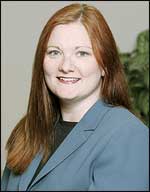 Barry D. Pressman, MD Barry D. Pressman, MD |
The American College of Radiology recently announced the creation of its Commission on Communications, to be headed by Barry D. Pressman, MD, a neuroradiologist and head and neck radiologist and chair of the S. Mark Taper Foundation Imaging Center at Cedars-Sinai Medical Center, Los Angeles. Pressman holds offices and committee positions in numerous medical societies and has held clinical faculty positions at Stanford University and the UCLA School of Medicine, and, currently, the University of California, Irvine. He is a past president of the Western Neuroradiological Society and the California Radiologic Society, and also a senior official of the ACR. He recently spoke with Decisions in Axis Imaging News about his objectives for the commission.
Q. Why did the ACR establish this commission now?
Pressman: It is not actually a new idea for the college. But it needed the right people to come along and make it happen. The commission is the brainchild of Stephen Amis, chairman of the board, and he saw a need to develop a cohesive and effective program of communicating the college’s message to our many audiences. He also sought to simplify the utilization of the college’s services by communicating more effectively within the organization. In his research during the last couple of years, he found that the college is communicating in many different ways, but not necessarily with any central organizational control. So that is what the commission is trying to do: centralize and improve all communication by looking for duplication, maximizing advantages that exist in the size of the organization, and developing a plan for improving our overall communication ability, both internally and externally.
Q. Why did the ACR tap you for the job?
Pressman: I’ve been involved in the college actively since the mid 1980s, on various committees and commissions. Then I became vice-speaker and speaker of the council, and so I became involved in every aspect of the college. So when I was elected to the board of chancellors, I was at that point involved in so many aspects of the college, that I could certainly help understand all of them and bring them all together in a cohesive fashion.
Q. In the past, the ACR has operated in an insular fashion, with little attempt at external communications. Why the about-face?
Pressman: This is not a brand-new decision. But it is a decision to communicate in the most effective way. We have never done this cohesively and effectively to the community: patients, regulatory agencies, third-party payors, hospitals, and the entire gamut of the health care industry. These are the people we want to reach the most. We have not been letting them know everything we can do to help them improve patient care. We want to let them know who we are, what we stand for, and how we can help them. And we have a tremendous amount of information. For example, something simple like our appropriateness criteria could be incredibly valuable to regulatory agencies, payors, patients, physicians. They could all benefit tremendously from this. So I want to get that information out there to them. That would be a typical example.
Q. What are your short-term and long-term objectives for the commission?
Pressman: The short-term work has already begun. We are making a major revision of our Web site, www.acr.org, to draw radiologists in daily, so that it is the hub of their radiological life. It will be like a portal, and will have enough daily information to make people want to visit it. We will integrate email, so there will be a college email that they can have for life, as well as being able to access their own email through it. Everything that they access right now from other sources, such as our bulletin, state chapter news, our coding sourceall of these will be accessed through the Web page. I want to make this a central place so that radiologists are aware of everything that is happening at the college. We also want to make it easier for the public to access that information. Additionally, we are going to expand the distribution of the Web page as a place that patients and hospitals, for example, might go for information. I also want to develop a proactive plan for getting our mission out to the media, national and local alike, and ramp up our PR work. We are just starting to develop a marketing arm, and it will be under my commission. We also want to brand all of our different publications, with more cohesiveness there. The bulletin is going to become an e-communication tool; the last paper issue will be in October. Its nature will changeit will be more limited to people news and chapter activity.
Long term, my objectives are much more expansive than that. I want to involve the college with many other radiological organizations on the communications side, so we are not duplicating each other’s work and there is more of a synergistic relationship developed. For example, the radiologyinfo.org Web site is a collaboration between the ACR and the RSNA. I want to look for those kinds of synergies with other organizations. We are going to incorporate the Radiology Business Managers Association (RBMA) into our Web, and hopefully other radiological societies as we go forward. All the state Web sites will be incorporated into that site as well. The other big challenge is expanding the college’s public relations, media relations work, and marketing. Those are things I would really like to expand greatly. Not necessarily advertising per se, but through the Web, public service announcements, and other avenues.
Ben Van Houten is news editor of Decisions in Axis Imaging News.




